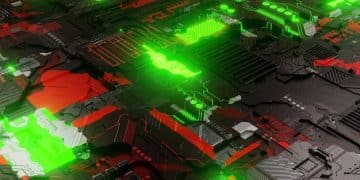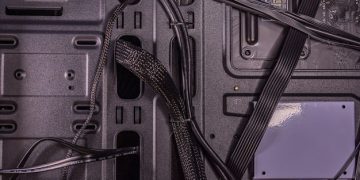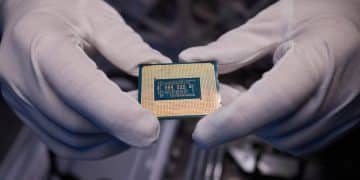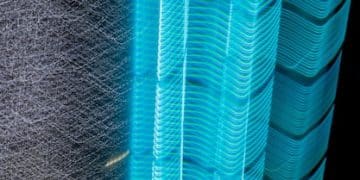SSD Lifespan Secrets: Maximize Your NVMe Drive’s Longevity for 5+ Years
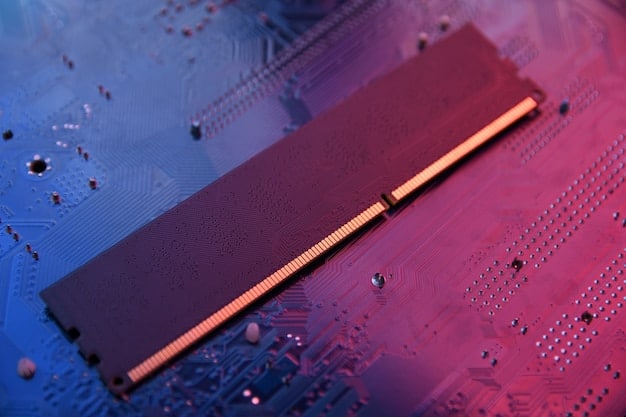
Unlock the secrets to extending your NVMe SSD’s lifespan beyond 5 years by understanding its limitations, optimizing usage, and implementing proactive maintenance strategies to protect your valuable data and gaming performance.
Is your NVMe SSD Lifespan Secrets: How to Maximize Your NVMe Drive’s Longevity for 5+ Years a concern? High-performance NVMe drives are crucial for gaming, but their endurance is finite. Let’s explore ways to extend their life, ensuring your gaming rig remains top-notch for years to come.
Understanding NVMe SSD Lifespan
Knowing the basics about NVMe SSD lifespan is key to making informed decisions about drive management and usage. These drives, while incredibly fast, have a limited number of write cycles.
Let’s define what impacts their longevity and how manufacturers rate them.
What Affects SSD Lifespan?
Several factors influence how long your NVMe SSD will last. The primary one is the number of times data is written to the drive, but other elements like temperature and power usage also play significant roles.
- Write Cycles: SSDs use flash memory, which degrades each time data is written and erased. The more your drive writes, the faster it wears out.
- Temperature: Overheating can significantly reduce the lifespan of an SSD. Proper cooling is essential to maintain optimal performance.
- Power Outages: Sudden power loss during write operations can cause data corruption and potentially damage the drive.
- Over-Provisioning: SSDs use a portion of their capacity for internal management. This over-provisioning helps extend lifespan by managing wear leveling.
TBW (Terabytes Written) Explained
Manufacturers use TBW as a benchmark to indicate how much data can be written to an SSD before it’s likely to fail. Understanding this rating helps you estimate the lifespan of your drive.

TBW is a crucial metric, but real-world usage patterns also matter. A drive with a high TBW rating can still fail prematurely if subjected to constant high temperatures or power fluctuations.
In summary, understanding the lifespan factors and manufacturer ratings can help you make smarter decisions to prolong the life of your NVMe SSD.
Optimizing Drive Usage for Longevity
Optimizing how you use your NVMe SSD is critical for extending its lifespan. Proper drive usage can reduce unnecessary writes and keep your drive running efficiently. Here’s what you need to know.
Implementing mindful usage habits and optimizing system settings can drastically improve your SSD’s longevity.
Minimize Unnecessary Writes
Reducing the amount of data written to your SSD can significantly extend its life. This involves being mindful of the types of applications and processes that frequently write data.
- Disable Indexing: Windows indexing can cause frequent writes. Disabling it on your SSD can reduce wear.
- Reduce Browser Caching: Limit the size of your browser cache or move it to another drive to minimize writes.
- Avoid Defragmentation: SSDs don’t benefit from defragmentation and it only adds unnecessary writes.
Enable TRIM Support
The TRIM command tells the SSD which data blocks are no longer in use and can be erased. This helps maintain performance and reduce wear.
Most modern operating systems support TRIM. Make sure it’s enabled.
Adjust Virtual Memory Settings
Virtual memory uses hard drive space as an extension of RAM. Reducing its usage on the SSD can decrease write cycles.
Consider increasing your system RAM to reduce reliance on virtual memory or move the page file to a secondary drive.
By minimizing writes, enabling TRIM, and adjusting virtual memory settings, you can optimize your NVMe SSD’s usage for a longer lifespan.
Cooling Solutions to Prevent Overheating
Heat is a major enemy of SSDs. Keeping your NVMe drive cool is essential for maintaining its performance and prolonging its lifespan. Adequate cooling solutions can prevent thermal throttling and drive degradation.
Implementing effective cooling is a straightforward way to add years to your NVMe SSD’s life.
Importance of Heat Sinks
Heat sinks are designed to dissipate heat away from the SSD. They are a simple and effective way to keep your drive cool.
Attaching a heat sink to your NVMe SSD can significantly lower its operating temperature, especially during heavy workloads.
Optimizing Case Airflow
Proper case airflow is crucial for removing hot air and bringing in cool air. This helps keep all components, including your SSD, at a safe temperature.
- Fan Placement: Ensure fans are positioned to create a consistent flow of air across the motherboard and components.
- Cable Management: Proper cable management improves airflow by reducing obstructions.
- Regular Cleaning: Dust buildup can impede airflow. Clean your case regularly to maintain optimal cooling performance.
Water Cooling Considerations
While less common for SSDs, water cooling can provide superior temperature control. Some advanced setups include water blocks for NVMe drives.
Water cooling offers the best thermal performance but is typically reserved for high-end systems and overclocking enthusiasts.
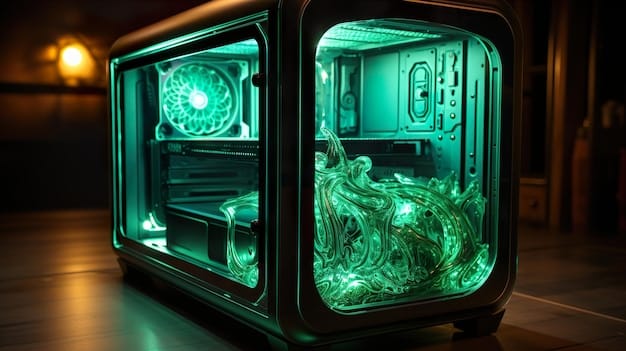
Implementing heat sinks, optimizing case airflow, and considering water cooling can effectively manage your NVMe SSD’s temperature and extend its lifespan.
Monitoring Drive Health and Performance
Regular monitoring of your NVMe SSD’s health and performance can provide early warnings of potential issues. This allows you to take proactive steps to prevent data loss and extend the drive’s life. Utilizing specialized software and understanding key metrics are essential.
Proactive monitoring is like having a health checkup for your SSD, catching problems early and preventing long-term damage.
SMART (Self-Monitoring, Analysis and Reporting Technology)
SMART is a monitoring system built into SSDs that tracks various health metrics. Accessing this data can provide valuable insights into the drive’s condition.
SMART data includes information on temperature, total bytes written, error counts, and more, helping you assess the drive’s health.
Software Tools for Monitoring
Several software tools are available to monitor your SSD’s health. These tools provide an easy-to-understand interface for accessing SMART data and other drive information.
Popular tools include CrystalDiskInfo, Samsung Magician, and WD SSD Dashboard, offering detailed diagnostics and performance monitoring.
Interpreting Key Metrics
Understanding the key metrics provided by monitoring tools is crucial. Look for indicators of wear, temperature anomalies, and error rates.
- Temperature: Monitor the drive’s temperature under load to ensure it stays within safe operating limits.
- Wear Leveling Count: Indicates how evenly the drive’s cells are being used. A balanced wear leveling count is ideal.
- Error Counts: High error counts can indicate potential issues with the drive’s health.
By regularly monitoring your NVMe SSD’s health using SMART data and specialized software, you can identify potential problems early and take steps to prevent failure.
Backup Strategies for Data Protection
Even with the best maintenance practices, SSDs can still fail. Having a robust backup strategy is essential for protecting your data. Regular backups ensure that you can recover your files and settings in case of drive failure.
Think of backups as an insurance policy for your digital life, protecting against unexpected data loss.
Importance of Regular Backups
Backups should be performed regularly to ensure that your data is current. The frequency of backups depends on how often your data changes.
For critical data, consider daily or even real-time backups. For less frequently changed data, weekly or monthly backups may suffice.
Types of Backup Solutions
Several backup solutions are available, each with its own advantages and disadvantages. Choose the solution that best fits your needs and budget.
- Cloud Backups: Services like Backblaze, Carbonite, and IDrive offer automated cloud backups.
- Local Backups: Using an external hard drive or NAS (Network Attached Storage) device for local backups.
- Image Backups: Creating a full image of your system allows you to restore everything, including the operating system, applications, and data.
Implementing a 3-2-1 Backup Strategy
The 3-2-1 backup strategy is a best practice approach to data protection. It involves keeping three copies of your data on two different media, with one copy offsite.
This strategy ensures that you have multiple layers of protection against data loss due to drive failure, theft, or natural disasters.
Implementing regular backups and following the 3-2-1 strategy can safeguard your data and provide peace of mind in case of NVMe SSD failure.
Understanding NVMe SSD Technologies: SLC, MLC, TLC, and QLC
The type of NAND flash memory used in your NVMe SSD significantly impacts its performance, lifespan, and cost. Understanding the differences between SLC, MLC, TLC, and QLC technologies is crucial for making informed purchasing decisions and optimizing drive usage.
Different NAND technologies determine the storage density, speed, and endurance of your SSD. Choosing the right one can significantly affect your overall experience.
SLC (Single-Level Cell)
SLC stores one bit of data per cell, offering the highest performance and endurance. However, it is also the most expensive.
SLC is typically used in enterprise-grade SSDs where performance and reliability are paramount.
MLC (Multi-Level Cell)
MLC stores two bits of data per cell, providing a good balance of performance, endurance, and cost.
MLC is often found in high-performance consumer SSDs and professional workstations.
TLC (Triple-Level Cell)
TLC stores three bits of data per cell, offering a higher storage density and lower cost compared to MLC. However, it has lower performance and endurance.
TLC is commonly used in mainstream consumer SSDs.
QLC (Quad-Level Cell)
QLC stores four bits of data per cell, providing the highest storage density and lowest cost. However, it has the lowest performance and endurance.
QLC is typically used in budget-friendly SSDs and storage-focused applications.
Understanding the characteristics of SLC, MLC, TLC, and QLC NAND flash memory can help you choose the right NVMe SSD for your needs and optimize its usage for maximum lifespan.
| Key Point | Brief Description |
|---|---|
| 💡 Minimize Writes | Reduce unnecessary data writing to extend SSD lifespan. |
| 🌡️ Cooling Solutions | Keep SSD cool with heat sinks and optimized airflow. |
| 📊 Monitor Health | Use SMART data to track SSD condition and performance. |
| 💾 Backup Data | Implement a 3-2-1 backup strategy to protect against data loss. |
FAQ
▼
An NVMe SSD should last 5+ years with optimal usage and maintenance, but this varies depending on usage patterns. Heavy usage could shorten lifespan.
▼
Use SMART data and tools like CrystalDiskInfo to monitor temperature, wear leveling, and error counts for a health assessment.
▼
Yes, keeping your SSD at least 25% empty helps maintain performance and prolongs its lifespan by reducing write amplification.
▼
No, defragmentation is not beneficial for SSDs and can actually reduce their lifespan by causing unnecessary write cycles.
▼
TRIM is a command that tells the SSD which data blocks are no longer in use, helping maintain performance and reduce wear, extending lifespan.
Conclusion
Extending the lifespan of your NVMe SSD involves understanding its limitations, optimizing usage habits, implementing cooling solutions, monitoring drive health, and having a solid backup strategy. By following these **SSD Lifespan Secrets: How to Maximize Your NVMe Drive’s Longevity for 5+ Years**, you can ensure your gaming PC remains fast and reliable for years to come, protecting your valuable data and investment.
